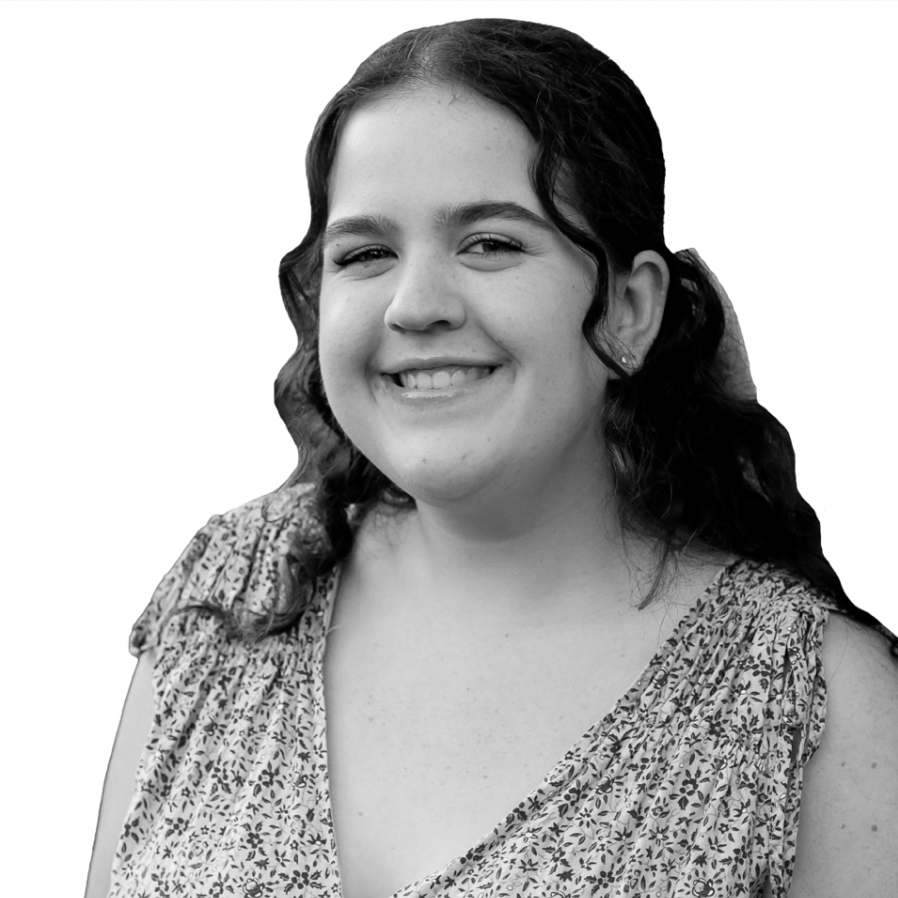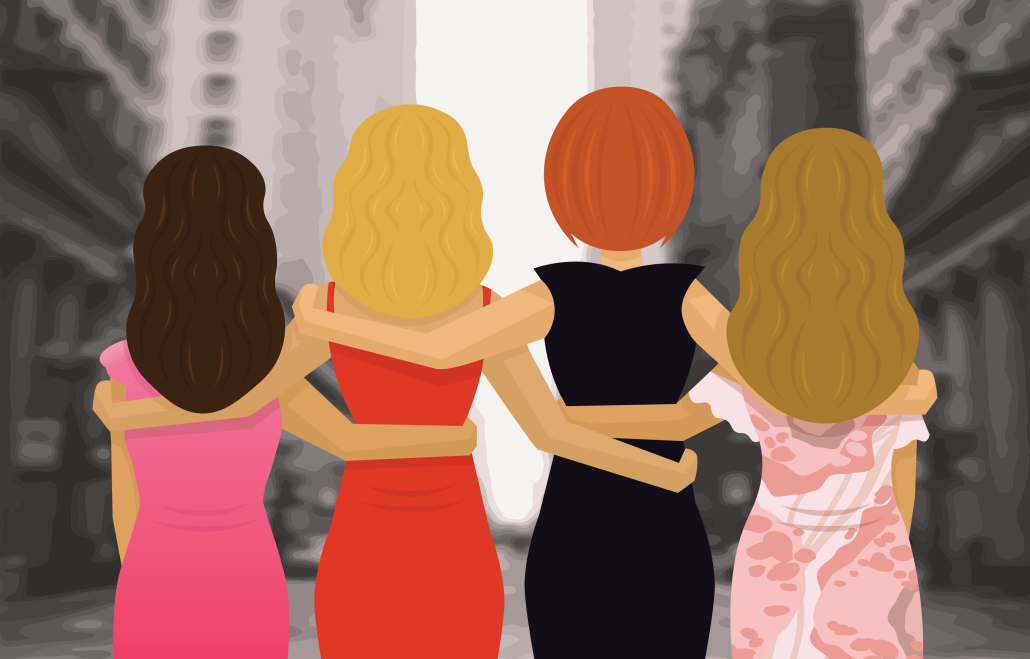COMIC RELIEF
The trouble with dated media
“Sex and the City” asks us to consider how much tasteless content can be excused because of old age.
“Sex and the City” asks us to consider how much tasteless content can be excused because of old age.


Content warning: This article contains references to homophobia, biphobia and racism.
Some media is clearly a product of its time. Sometimes, the media will get removed, scrubbed from viewing because it is so disturbingly offensive. Or, sometimes, the shows are still celebrated as classics, but to any critically thinking individual, it’s clear that those shows should be left behind. Other times, it’s just not that simple.
As I walked through University Park Campus, crossing Trousdale Parkway, I couldn’t help but wonder: Are we allowed to like dated media?
Yes, that was my best attempt at Carrie Bradshaw writing because today, I am grappling with my love-hate relationship with “Sex and the City.”
I have fallen in love with “Sex and the City” this semester. The fabulous lives of beautiful New York women make for an undoubtedly fabulous show.
I would not go so far as to call it proper feminism, but there are important conversations about womanhood — albeit centered around privileged, conventionally attractive, straight white women. Any storyline that does not deal with heterosexual white people is poorly written, not taken seriously and quite often offensive.
I want to make it abundantly clear that I do not think “SATC” should be necessarily celebrated as a win for feminism. But there are certain aspects of the show that can be admired, especially concerning society’s expectations for women.
Carrie, Miranda, Samantha and Charlotte struggle with disrespect in the workplace, slut-shaming and the pressure to conform to the American nuclear family. Social media often calls for more complex female characters — and Carrie, Miranda, Samantha and Charlotte provide that in full.
Though what strikes me the most about the show is its beautiful depiction of women’s friendships. The women fight and argue, but they always love each other. The show — which markets itself with “sex” — follows the women’s relationships with (almost always) men. The four women are always looking for sex, love or marriage.
But the true love story of the show is between the friends.
Throughout the show, the women get promoted, go through breakups, grieve family members. Men come and go, but their friendship is forever. When a show centers so much on women’s love lives, it would be easy to lose the narrative to one that is centered around men. I’ll let Carrie explain:
“The most important thing in life is your family. There are days you love them and others you don’t, but in the end, they’re the people you always come home to. Sometimes it’s the family you’re born into and sometimes it’s the one you make for yourself.”
That being said, as a show from the late ’90s to early 2000s, it occasionally shows its age. And when it does, it’s bad.
It’s easy to fall into a “SATC” binge — episodes fly by in seemingly minutes. Then, all of a sudden, Carrie is saying, “I’m not even sure bisexuality exists. I think it’s just a layover on the way to gaytown.” This quote is just one of many cases where the show utterly failed to respect LGBTQIA+ characters, stories and identities.
It’s disturbing to see this line played for laughs — and the fact that people believed that (and some people still do). We see now the “SATC” creators trying to undo their harm in the spin-off “And Just Like That…” which features a nonbinary main character and a queer relationship — albeit a poorly written one.
The new show does not undo the original’s harm. In another tough moment for the modern viewer, Samantha briefly entered a relationship with another woman and the other three women responded by saying: “She’s not a lesbian; she just ran out of men.”
The show also had virtually no characters of color. If one was added, they were a short-term fling with no discerning personality besides racial stereotypes.
Can these archaic ideas and depictions be excused as a product of their time?
It’s clear that the show, its actors and writers have progressed in their ideologies. There was less education about and representation of LGBTQIA+ topics in the early 2000s. Still, Cynthia Nixon — the actress of Miranda — is queer and came out in 2004. She has long been an advocate for LGBTQIA+ rights.
So, the members of the show were not truly unaware of LGBTQIA+ identities. But the types of jokes they were making were normalized at the time. I can’t get in the heads of the show’s writers; I also can’t speak to the culture of the time — I was not even a full year old by the time the final episode of the original “Sex and the City” aired.
And just like that, this issue is still something I’m dealing with.
I can’t tell you what to watch or not watch, and I don’t want to. “Sex and the City” is nowhere near the greatest problem in the media. More blatantly queerphobic content is still being produced today.
There’s no neat answer or wrap-up for this column installment. As viewers, all we can do is be thoughtful in our consumption.
Kimberly Aguirre is a junior writing about comedy. Her column, “Comic Relief,” runs every other Thursday. She is also an associate managing editor at the Daily Trojan.
We are the only independent newspaper here at USC, run at every level by students. That means we aren’t tied down by any other interests but those of readers like you: the students, faculty, staff and South Central residents that together make up the USC community.
Independence is a double-edged sword: We have a unique lens into the University’s actions and policies, and can hold powerful figures accountable when others cannot. But that also means our budget is severely limited. We’re already spread thin as we compensate the writers, photographers, artists, designers and editors whose incredible work you see in our daily paper; as we work to revamp and expand our digital presence, we now have additional staff making podcasts, videos, webpages, our first ever magazine and social media content, who are at risk of being unable to receive the support they deserve.
We are therefore indebted to readers like you, who, by supporting us, help keep our paper daily (we are the only remaining college paper on the West Coast that prints every single weekday), independent, free and widely accessible.
Please consider supporting us. Even $1 goes a long way in supporting our work; if you are able, you can also support us with monthly, or even annual, donations. Thank you.
This site uses cookies. By continuing to browse the site, you are agreeing to our use of cookies.
Accept settingsDo Not AcceptWe may request cookies to be set on your device. We use cookies to let us know when you visit our websites, how you interact with us, to enrich your user experience, and to customize your relationship with our website.
Click on the different category headings to find out more. You can also change some of your preferences. Note that blocking some types of cookies may impact your experience on our websites and the services we are able to offer.
These cookies are strictly necessary to provide you with services available through our website and to use some of its features.
Because these cookies are strictly necessary to deliver the website, refusing them will have impact how our site functions. You always can block or delete cookies by changing your browser settings and force blocking all cookies on this website. But this will always prompt you to accept/refuse cookies when revisiting our site.
We fully respect if you want to refuse cookies but to avoid asking you again and again kindly allow us to store a cookie for that. You are free to opt out any time or opt in for other cookies to get a better experience. If you refuse cookies we will remove all set cookies in our domain.
We provide you with a list of stored cookies on your computer in our domain so you can check what we stored. Due to security reasons we are not able to show or modify cookies from other domains. You can check these in your browser security settings.
These cookies collect information that is used either in aggregate form to help us understand how our website is being used or how effective our marketing campaigns are, or to help us customize our website and application for you in order to enhance your experience.
If you do not want that we track your visit to our site you can disable tracking in your browser here:
We also use different external services like Google Webfonts, Google Maps, and external Video providers. Since these providers may collect personal data like your IP address we allow you to block them here. Please be aware that this might heavily reduce the functionality and appearance of our site. Changes will take effect once you reload the page.
Google Webfont Settings:
Google Map Settings:
Google reCaptcha Settings:
Vimeo and Youtube video embeds:
The following cookies are also needed - You can choose if you want to allow them:
